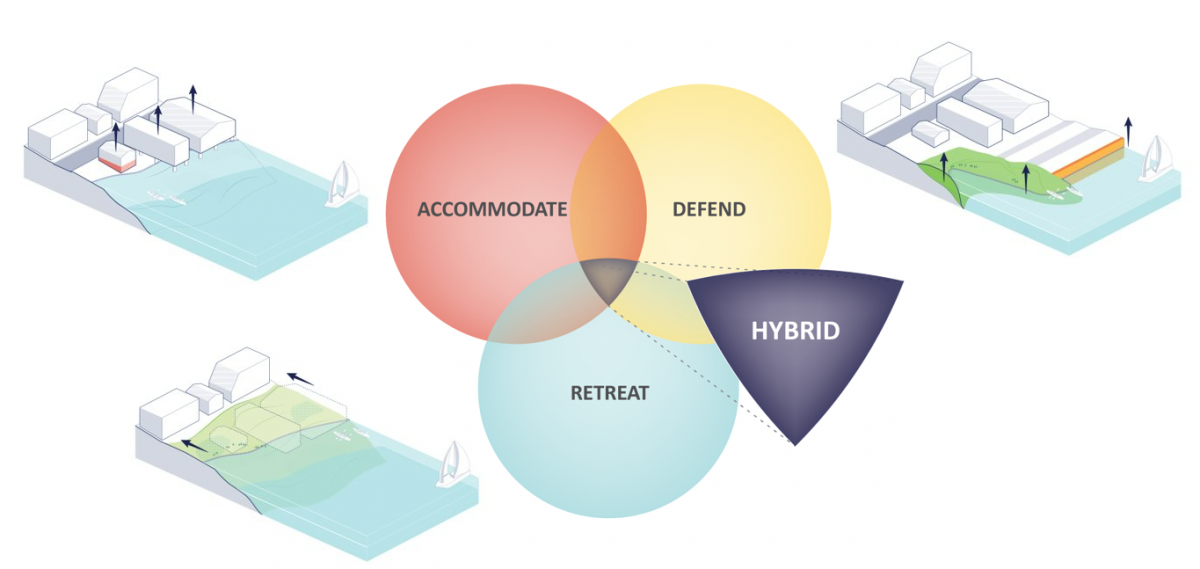San Francisco faces coastal flood risks today. These risks will increase in the future due to sea level rise and extreme storms, threatening buildings, small businesses, popular attractions and open spaces, jobs, and critical services such as BART, Muni, and the wastewater system.
To defend San Francisco from current and future flood risk, there is a need to adapt shoreline elevations to address 3 to 7 feet of sea level rise expected by 2100. Any effort aimed at long-term sea level rise resilience will also need to strengthen the waterfront against the urgent earthquake risk we face today.

Left: photo by Dave Rauenbuehler
Three Approaches: Defend, Accommodate, Retreat
Adapting the waterfront will require change on a large scale. It will mean making challenging choices that balance multiple factors and priorities.
There are three approaches to address flooding and earthquake risks along our waterfront. Defend, Accommodate, Retreat. Each approach has many possibilities and comes with challenges.
There is no single approach to adaptation that will meet the needs of San Francisco along the entire waterfront. The different risks, topography, and historic development of the waterfront means that we will need to use a combination of approaches.
Defend against floods by raising the existing shoreline to keep the water out.
Accommodate flooding by letting the water in, adapting buildings and infrastructure in place.
Retreat from the current shoreline by moving buildings and infrastructure inland.

San Francisco Waterfront Flood Study - Draft Plan Released
The U.S. Army Corps of Engineers (USACE), in collaboration with the City of San Francisco, has reached an important milestone in the San Francisco Waterfront Flood Study – the release of the Draft Plan.
Reflecting more than six years of community engagement and public input, the Draft Plan proposes actions to defend the shoreline against rising sea levels and presents an environmental analysis of those actions.
USACE and the City are seeking public comment on the Draft Plan and Environmental Review through March 29, 2024.
- View the schedule of upcoming community events to learn more about the Draft Plan and share your feedback.
- Ready to add a comment? Visit the Draft Plan page for ways you can to provide a comment.
Learn More about Adapting the Waterfront
For more information about seismic and flood risks facing the waterfront, visit the Seismic and Flood Risk 101 page.
To learn more about about how the Port is adapting the waterfront, visit the Embarcadero Early Projects and Living Seawall Pilot pages.